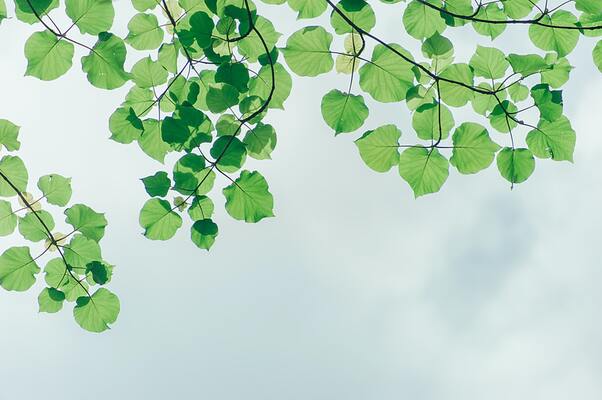
Beech leaf disease, also known as beech bark disease, primarily affects the leaves of European beech trees (Fagus sylvatica). Beech leaf disease was first noted in Europe in the 1960s, though some evidence suggests that it may have existed as early as 1900.
Although beech leaf disease has only been found in Fagus sylvatica, related tree species, such as American beech (Fagus grandifolia) and Japanese beech (Fagus crenata), can exhibit similar symptoms if they are infected with another fungal pathogen, Cylindrocladium scoparium.
Description
Beech leaf disease is a bacterial infection that causes leaves on beech trees to turn brown and develop blackish-brown spots. To determine if your tree has beech leaf disease, you’ll need to examine its leaves for symptoms of bacterial scorch.
Trees infected with bacteria often suffer from nutritional deficiencies as well as damage to their root systems. Eventually, most infected trees will die. Fortunately, there are a number of things homeowners can do to treat beech leaf disease at home.
These include soil treatments, removing fallen branches and leaves, pruning out diseased limbs, and applying water or fertilizer directly onto roots. In severe cases where these tips fail to work, it may be necessary to hire a professional arborist or tree service provider for additional treatment methods. If left untreated for long periods of time, affected trees are likely to die off completely within two years or less.
If you think your favorite tree is suffering from beech leaf disease it's best not to wait any longer before seeking help today! Act now before it's too late!
Biology
Beech leaf disease (Bld) was first reported on Chamaecyparis in Japan in 1986, and there are now a number of reports of Bld on Chamaecyparis, Thujopsis, Lawson cypress, and Cryptomeria. This name is derived from an analogy with beech bark disease caused by Nectria coccinea, though it differs considerably in host range and symptoms.
The affected tree produces leaves which are markedly reduced in size and distorted by areas of chlorosis giving a shot-hole appearance. Symptoms can vary somewhat between hosts: those on cryptomeria appear to show more severe symptoms than those caused by chamaecyparis.
Damage and symptoms
In some cases, a tree suffering from beech leaf disease will shed its leaves in autumn or early winter. If you notice your beeches shedding leaves at any other time of year, that could be a sign of beech leaf disease too. You can also check trees for symptoms by looking closely at their trunks and branches for signs of damage and decay.
Dead, discolored bark suggests that borers have been feeding on your tree, while holes may indicate sawfly larvae have bored into it. When looking for evidence of beech leaf disease, remember to check both sides of a tree's trunk; you're likely to find more insects and fungus hiding in crevices on the underside. The best way to control both pests is with insecticide spray.
Also, look out for tell-tale fruiting bodies -- usually, small spindle-shaped bodies called pycnidia -- which are produced by some types of fungi that cause beech leaf disease. These occur when many insects are present so they aren't always reliable indicators of an infestation; however, if they do appear on an otherwise healthy tree, they should raise suspicion about possible infection with these pathogens. Left unchecked, infection eventually causes woody tissues to die.
Management
The key to management is good sanitation practices and consistent monitoring. Eliminate leaves, twigs, and branches that touch other trees so beech bark disease can’t spread from tree to tree. For example, if one branch touches a healthy area of your beech tree and then another branch touches an infected area of another beech tree nearby, it could make its way into your own yard.
To avoid any infections in your own yard, consider pruning out any part of a branch or leaf that’s touched by anything from another plant or even just outside air; you don’t want to let any pathogens in—it’s better to be safe than sorry. Dead parts can harbor diseases, so getting rid of them won’t hurt your tree at all.
Monitoring also keeps disease from spreading from tree to tree. For example, there are many types of fungus in our soil that are present year-round. With good horticultural care, these fungi shouldn't cause issues for most plants as long as they're not already stressed due to low light levels or bad drainage conditions.
However when stressed (for example when their roots have been disturbed), these otherwise benign organisms may become problematic: killing individual plants and spreading beech bark disease throughout an entire forest via wind-borne spores.
1. Register your company
2. Create a searchable listing
3. Connect with more clients
